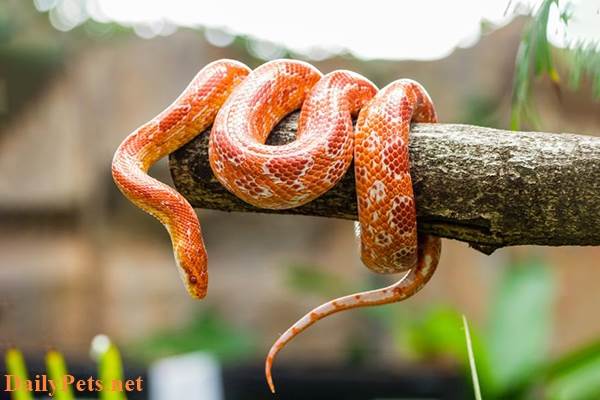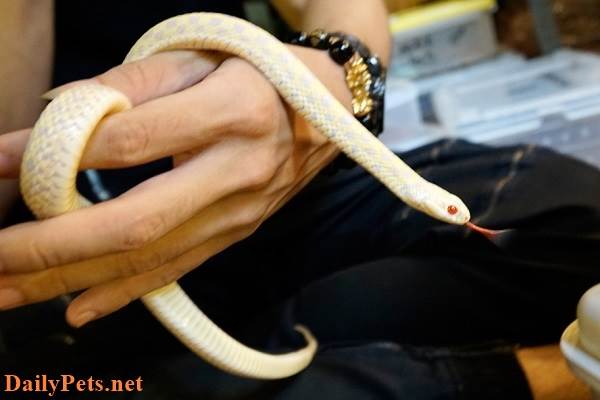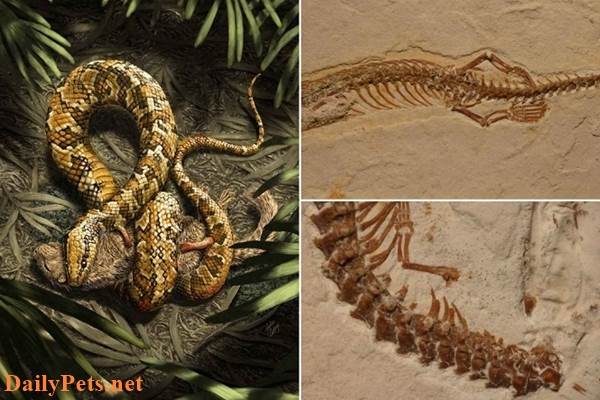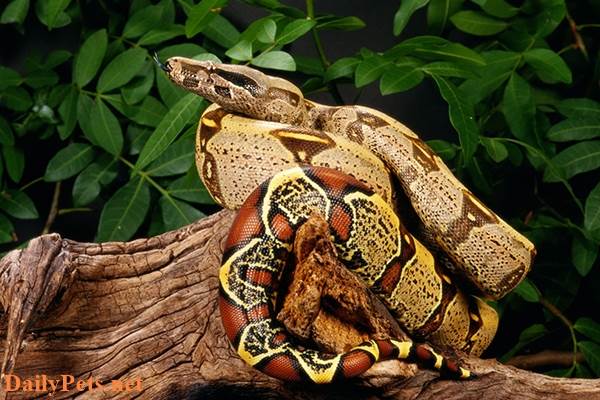King Snakes can climb trees and swim. Their favorite foods are rodents, birds, bird eggs, lizards, and snakes. These snakes are not venomous; they squeeze their prey to death. Their lifespan is 10 to 15 years. In particular, the King Snake is not harmed by the venom of other snakes.
It was one of the first snakes to be regularly bred in captivity, and many models and variations were developed.
The scientific name of King Snake
Lampropeltis is the scientific name of the King Snake. King Snakes belong to the family Colubridae and class Reptilia. In Greek, “Lampropeltis” means “shiny.” As can be seen, the scientific name of King Snakes has very clearly described their physical characteristics.
Where does the King Snake live?
King Snakes live in North America, especially in the eastern, western, and southern parts of the United States. Different species of King Snakes live in different parts of the United States, and some live in Mexico.
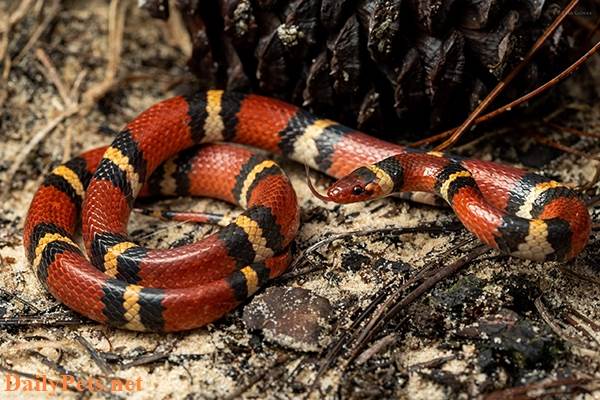
A Kingsnake.
Depending on the species, King Snakes have different habitats. Some live in forests and grasslands near water bodies, while others live in deserts. In forests or grasslands, these snakes hide in hollow tree trunks or beneath piles of leaves and sticks. Also, they can be found under rocks or in narrow crevices in the desert.
King Snakes are active in spring and summer. Their breeding season lasts from March to May, and their eggs hatch in late summer.
Characteristics of the King Snake
Newly hatched King Snake eggs range from 8 to 12 inches. The maximum size of King Snakes is over 6 feet long, although the average size is 3-4 feet. The King Snake is not a bulky and heavy snake. Therefore, they appear to be smaller than the photo. The average lifespan of the King Snake is more than 20 years. Female King Snakes usually lay eggs when they reach adulthood.
Popular types of King Snakes
There are currently six species of King Snakes, all belonging to the family Colubridae. Although some of these snakes are similar in appearance, they live in different places.
Eastern King Snake (Lampropeltis getula): This King Snake lives on the east coast of the United States from Pennsylvania to Florida. Their average length is only 36 to 48 inches, but the longest recorded Eastern King Snake is 82 inches.
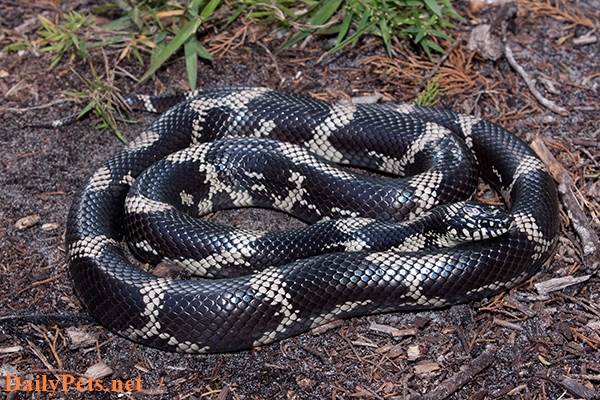
Eastern King Snake.
California King Snake (Lampropeltis californae): These King Snakes live in the cliff areas, marshlands, and grasslands of California. It is less showy than other King Snakes with black or brown scales with white bands.
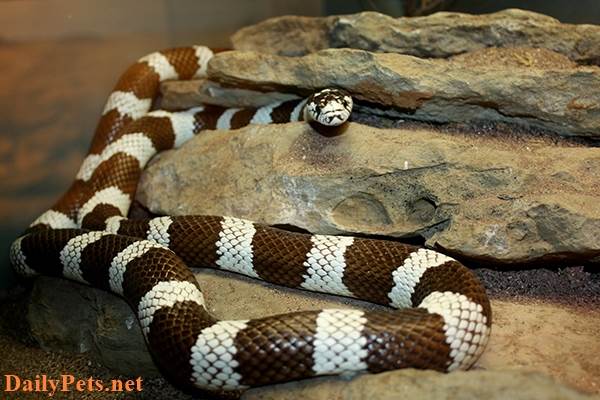
California King Snake.
Speckled King Snakes (Lampropeltis holbrooki): This species lives in the central and southern United States and reaches Mexico. Their territories include Iowa, Kansas, Louisiana, Missouri, and Texas. They are given this name because their black bodies are covered with yellow or mottled spots.
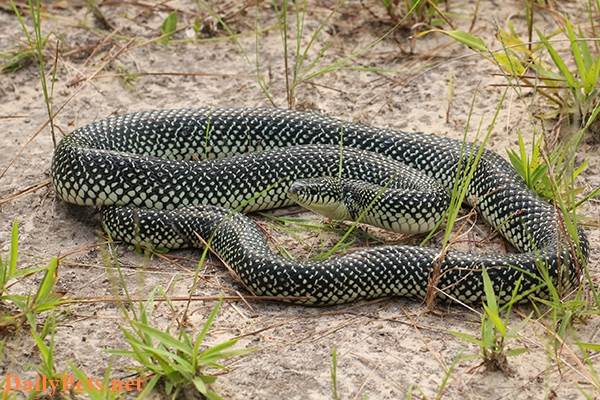
Speckled King Snakes.
Desert King Snake (Lampropeltisvialida): As the name suggests, this snake has a desert habitat. They live in the southern part of the United States, including Texas, New Mexico, and extending into Mexico. Compared to other King Snakes, this species is quite shy.
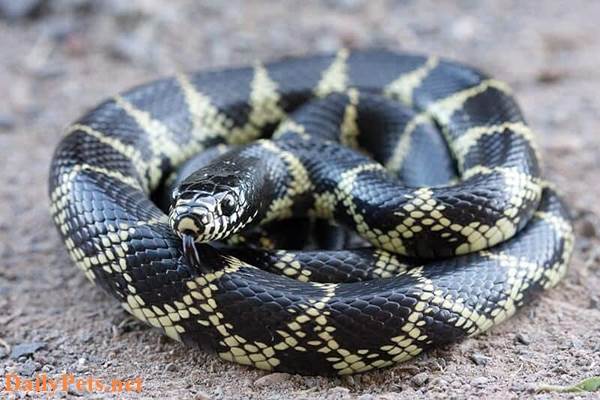
Desert King Snake.
Eastern Black King Snake (Lampropeltis nigra): They mainly live in the southern United States, including Kentucky, Tennessee, Alabama, Louisiana, and the northern part of Georgia. Their dark scales set them apart from the more colorful King Snakes.
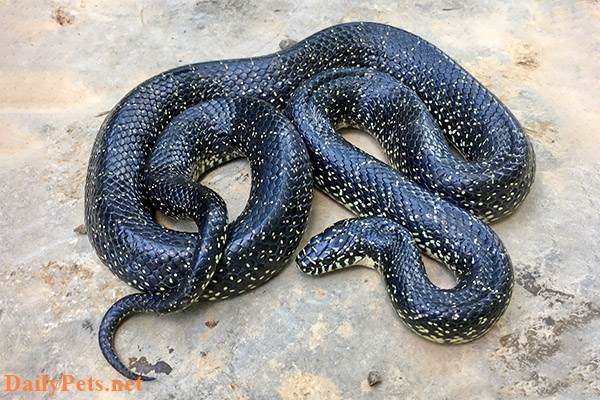
Desert King Snake.
Scarlet kingsnake (Lampropeltis elapsoides): This species is particularly colorful with its bands of black, red, white, and yellow. They live in the eastern and southeastern parts of the United States. This is the smallest King Snake species measuring no more than 20 inches long.
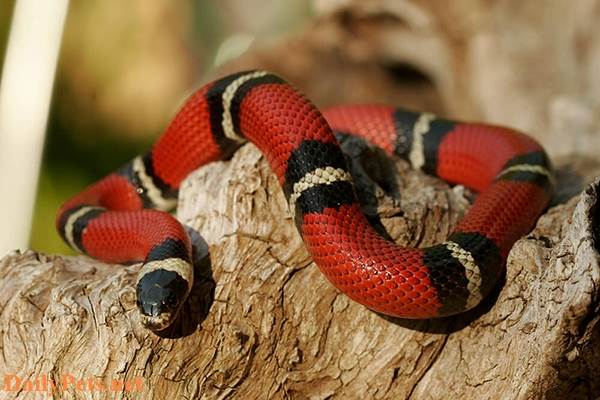
Scarlet kingsnake.
Are King Snakes dangerous?
King Snakes are not venomous. They are timid snakes that would rather burrow under leaves or rocks than confront a threat. A species of King Snake known as the desert King Snake died when threatened by humans. This means it remains on the ground until the person moves away, and the snake can escape safely.
Despite its timid temperament, the King Snake can bite humans if threatened. Although this snake is not venomous, its bite can be painful. If a King Snake bites someone, the first thing to do is wash the area with soap and warm water. Then apply first aid ointment on it. Using ice on the area can help relieve the pain if there is pain.
Remember, a Kingsnake bite is always likely to become infected. So, if a rash appears in the bite area, it’s best to see a doctor.
Caring for a King Snake
King Snake Cage
A general rule of thumb is that the King Snake cage must be at least 1.5 times larger in circumference than the snake’s length; a large cage is best. A baby King Snake can live in a shoebox for several months until they grow. An adult King Snake needs a cage of about 20 gallons or larger. Pet snakes are always considered very cunning fugitives, so you need a sturdy cage. If your cage has a weak spot, it will find it quickly and get out, which will be very dangerous.
King Snakes will eat other snakes, so you should keep them alone or a male and a female. Growing snakes should not be kept together; they may eat each other. You should keep them separately if you don’t want bad things to happen.
King Snake Cage Lining Substrate
To line the cage for King Snakes, you can use cage liners such as shavings, thin wood, corn cobs, or specialized pads for reptiles. You can find those substrates easily because they are always available at pet stores.
Cats, chemical treatments, or wood oils should not be allowed near your snake. A general rule of thumb is that your substance should not give off an odor that will be good for your snake. Food for King Snakes needs to be kept in a separate box because the substrate may be mixed with the digested food. Tissues are also good substances for your snake. If your King Snake can’t get into part of the substrate, you may want to provide it with a crate.
Light and temperature
King Snake does not need special lighting if the cages in the room have natural light. Be sure not to place the cage too close to a window where the sun shines on the cage, which can cause the cage to overheat and be fatal to your snake. King Snakes in the wild moves to find a place where the temperature is right. They are cold-blooded, so they need heat from their surroundings. In captivity, your choice is limited in what you offer, so you need to have one warm and cool side in your cage.
To do this, many heaters, pads, and light bulbs are available in stores. Some people use lamps for heating, which is not energy efficient and has disadvantages. For example, you can warm the air with a light, but the floor can still be cool to the snake. Try to get 85 degrees F on the warm side and 70 degrees F on the cool side. Hot stones should not be used; the concentrated heat can burn your snake.
King Snake Food
In the wild, the King Snake will only eat animals or birds that are small enough that it can be tamed and swallowed whole; it can also digest a rattlesnake. In captivity, they need to be fed rodents, usually rats, as this is readily available food. You can provide live mice or defrosted mice.
Feeding your King Snake live large rats can cause injury to your snake, so before feeding the snake, you should kill the rodents to keep it safe. give them the rat, when swallowed, will leave a large mass in the center of the snake’s belly. Until the snake has digested all of the food, do not handle them until the food has been digested. Feeding your snakes once a week is reasonable to maintain their growth; snakes will grow faster if you feed them twice a week.
When your King Snake has reached a large size, do not overfeed them to avoid obesity. You can reduce the diet if you feel it is necessary and good for your snake.
Provide clean water in a bowl deep enough that when the snake drinks water, it can soak in it; the amount of water is just enough so that the water does not overflow into the cage. If you don’t want them to spend too much time soaking in the water, you can increase the humidity in the cage so it feels damp, but you should only do it with them a few days a week. You should also keep an eye on their water bowl from time to time, and you need to clean it as needed.

